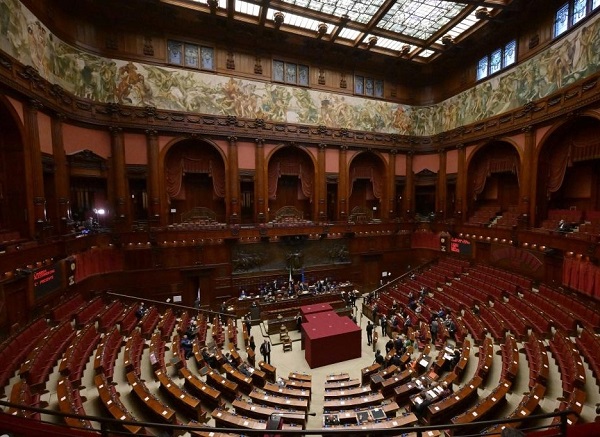
Rome, (Asian independent) In the last 24 hours, Italy went through two consecutive ballots to elect the country’s new President, but the stalemate among major parties produced again an inconclusive outcome.
The new president would replace outgoing Sergio Mattarella, 80, whose seven-year term ends on February 3, reports Xinhua news agency.
After a tense day of bitter exchanges between the two major political blocs — the centre-right and the centre-left, some signals emerged that the main leaders were finally heading toward discussing some common candidatures.
Parliament, in a joint session of both houses plus 58 representatives from the regional councils — all together making the so-called 1,009 “grand electors” — has gathered since Monday and held six rounds of voting so far.
Yet, no candidate got even close to gathering the necessary majority of votes, given the lack of an agreement between the centre-left led by the Democratic Party and Five Star Movement and the centre-right led by the League party and the Forza Italia party.
Neither of the two blocs would have the strength to elect a new head of state alone.
In the fifth round on Friday morning, the centre-right sought to force through the candidature of current Senate speaker Elisabetta Casellati, who however received 382 ballots only, far below the necessary threshold of 505 votes.
The centre-left abstained because they opposed both the choice of Casellati and the hard way their rivals undertook instead of seeking a compromise.
In the following sixth round, most centre-right lawmakers abstained while those in the centre-left were expected to cast blank ballots, and a large number of votes (336) were cast in favour of Mattarella.
Such a tense day led to a sort of breakthrough, with negotiations within parties and between the two coalitions increasing frantically.
On Friday evening, the leaders of the country’s three largest parties — right-wing League’s Matteo Salvini, and centre-left Democratic Party’s Enrico Letta and Five Star Movement’s Giuseppe Conte — finally met in person.
They reportedly agreed on a list of five names — Mario Draghi, current Prime Minister; Elisabetta Belloni, director general of The Department of Information Security (DIS); Pier Ferdinando Casini, former speaker of the lower house of Parliament; Giuliano Amato, vice president of the Constitutional Court; and Mattarella.
After the meeting, Letta confirmed the discussion between the two blocs was “ongoing”.
“We have finally started talking to each other, and we (the centre-left) are ready to keep discussing until a solution is found,” he said.
Salvini also confirmed the negotiation on common candidatures, adding that talks would be heading “towards a union of intent”.
He also said that he was working in order to have “a skilled, female president”.
The next vote is scheduled on Saturday morning, and Parliament will keep holding two rounds of ballots a day until an agreement is reached.
In Italy, the president plays largely a ceremonial role, but becomes crucial in case of major political crises, since he or she is tasked with solving major deadlocks between government and Parliament.







